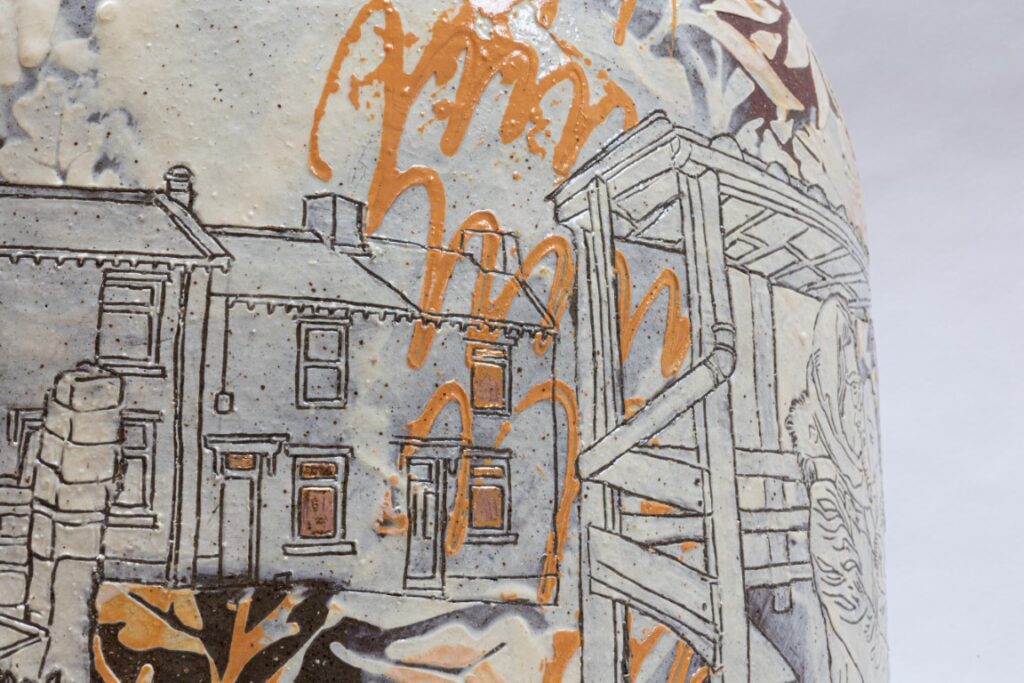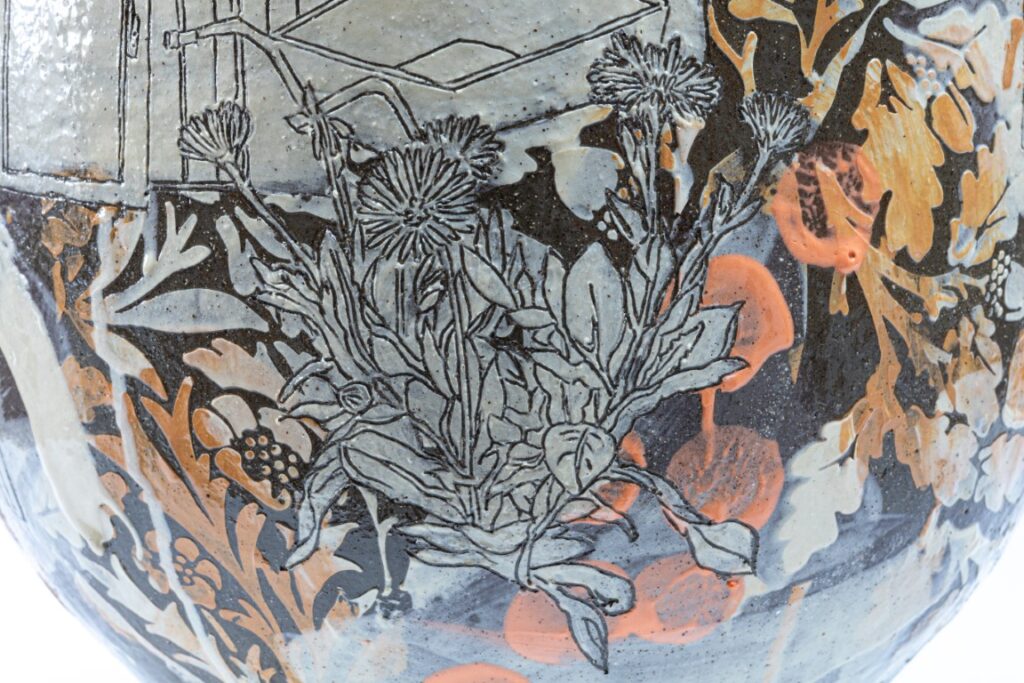In this blog, Lowri, our Curator of Collections invites us to take a closer look at two new ceramic pots, created specially for Bradford District Museums and Galleries by ceramicist Emilie Taylor. Presented by the Contemporary Art Society, 2024/25.
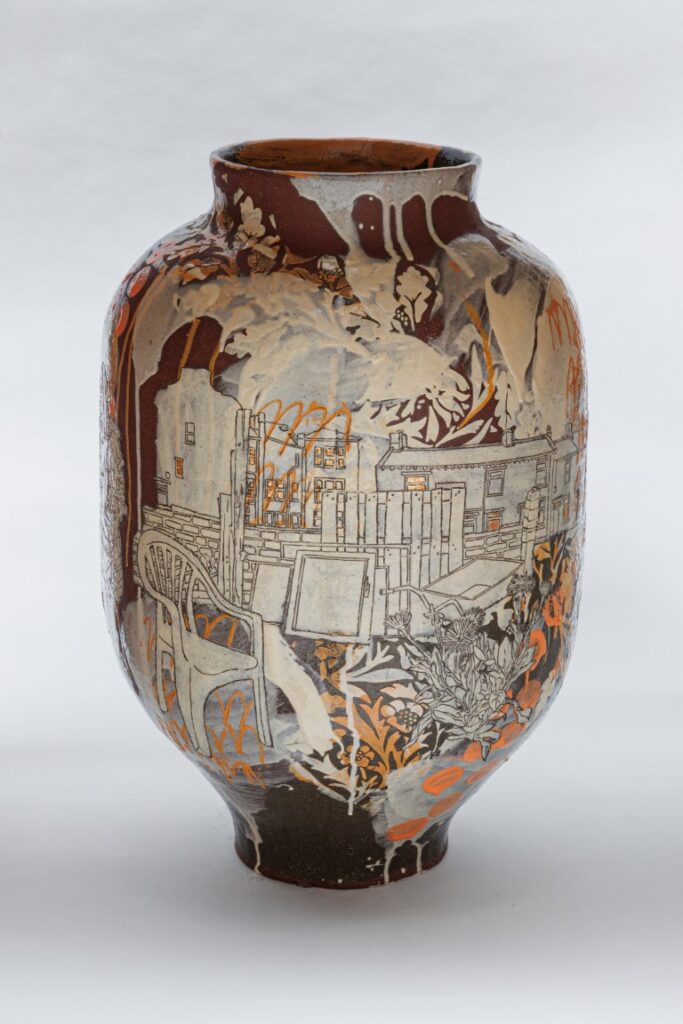
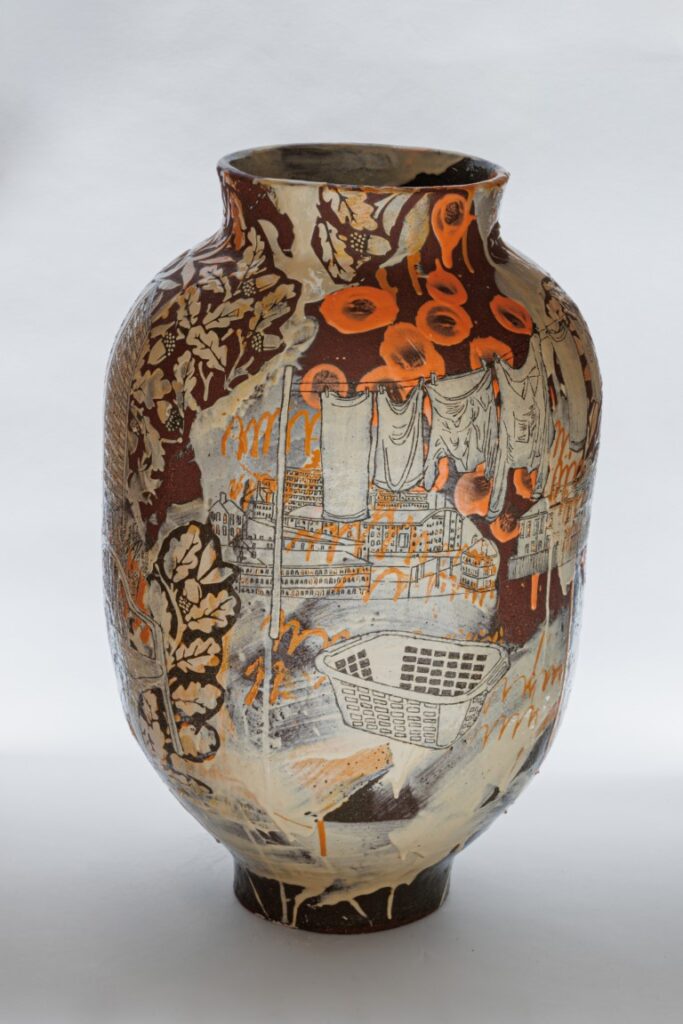
These two new artworks, Savage Ground I and Savage Ground II, were commissioned by the Contemporary Art Society. This pair of ceramic pots show images of women working in the modern urban landscape. They were made using slip – a combination of clay and water that can be used to create colour and effects. Emilie worked with people at the Refugee and the Women’s allotments, part of Scotchman Road Allotments in Manningham, and developed the images that you now see on the pots.
Emilie was inspired by objects in Bradford District Museums and Galleries’ collection, including paintings of buildings, and those showing women and children working in the landscape – she was particularly drawn to
On the Dykes by William Lee Hankey, painted in 1910.
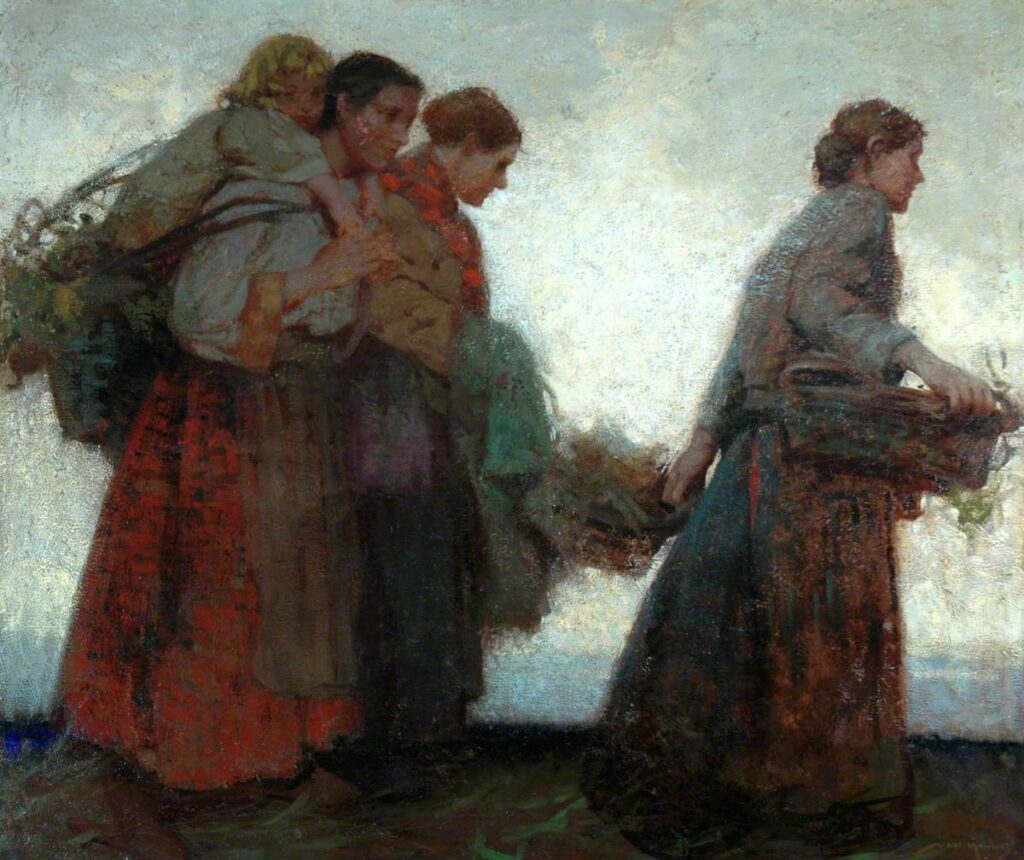
She was also influenced by examples of slipware pottery that were made in the villages to the west of Bradford. Some of this pottery celebrates important men from the past, showing records of their achievements in painted decoration and sgraffito (a technique where lines are scratched into ceramic). To contrast with this, Emilie wanted her new pots to show the important but overlooked work that is done by women and mothers.
About Emilie Taylor
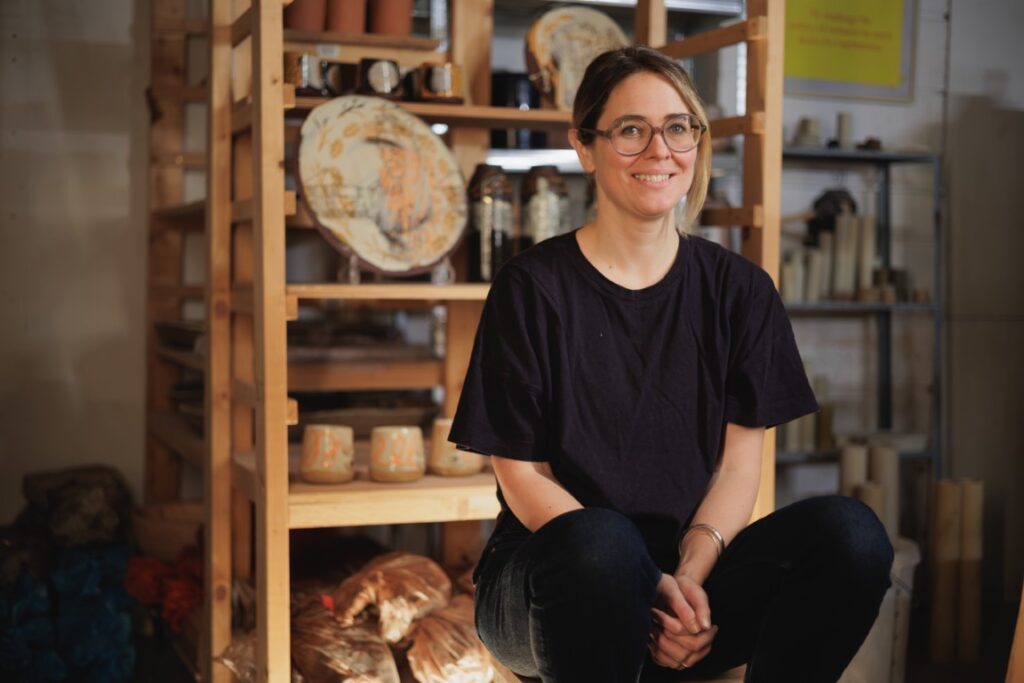
Emilie Taylor uses heritage crafts, particularly traditional slipware, to interpret and represent post-industrial landscapes. Taylor is interested in the vessel or container as a metaphor for how we seek to contain and restrain communities within British society, and she has an ongoing interest in the firing process as symbolic of change. Her work offers new interpretation to the modern urban landscape, reflecting on how the land today has cut its ties with past community rituals.
Taylor’s work has been described as “craftily infiltrat[ing] pottery’s decorative charm with hints of political dissent’ ((Robert Clark, The Guardian), and as “fram[ing] graphic images of life on the fringes of society, drawing from the urban landscape and its inhabitants.” (Penny Withers, Ceramic Review)
Adding the pots to the collection
BDMG seeks to acquire (add to the collection) artworks by or depicting the experiences of groups typically under-represented in the museum collections. Taylor came to our attention because she has previously worked with community groups and because she focuses on socially engaged practice. Her proposal, via the Contemporary Art Society, to engage with a local refugee allotment linked closely to BDMG’s priorities for collecting and for building relationships with local groups. Works by women and representing the experiences of women in the collection are not in proportion to those by and of men, and there has been (until now) no representation of refugee experiences.
BDMG are extremely pleased to have been able to work with Emilie on this commission, which you can see on display at Cartwright Hall Art Gallery during Bradford City of Culture 2025.
